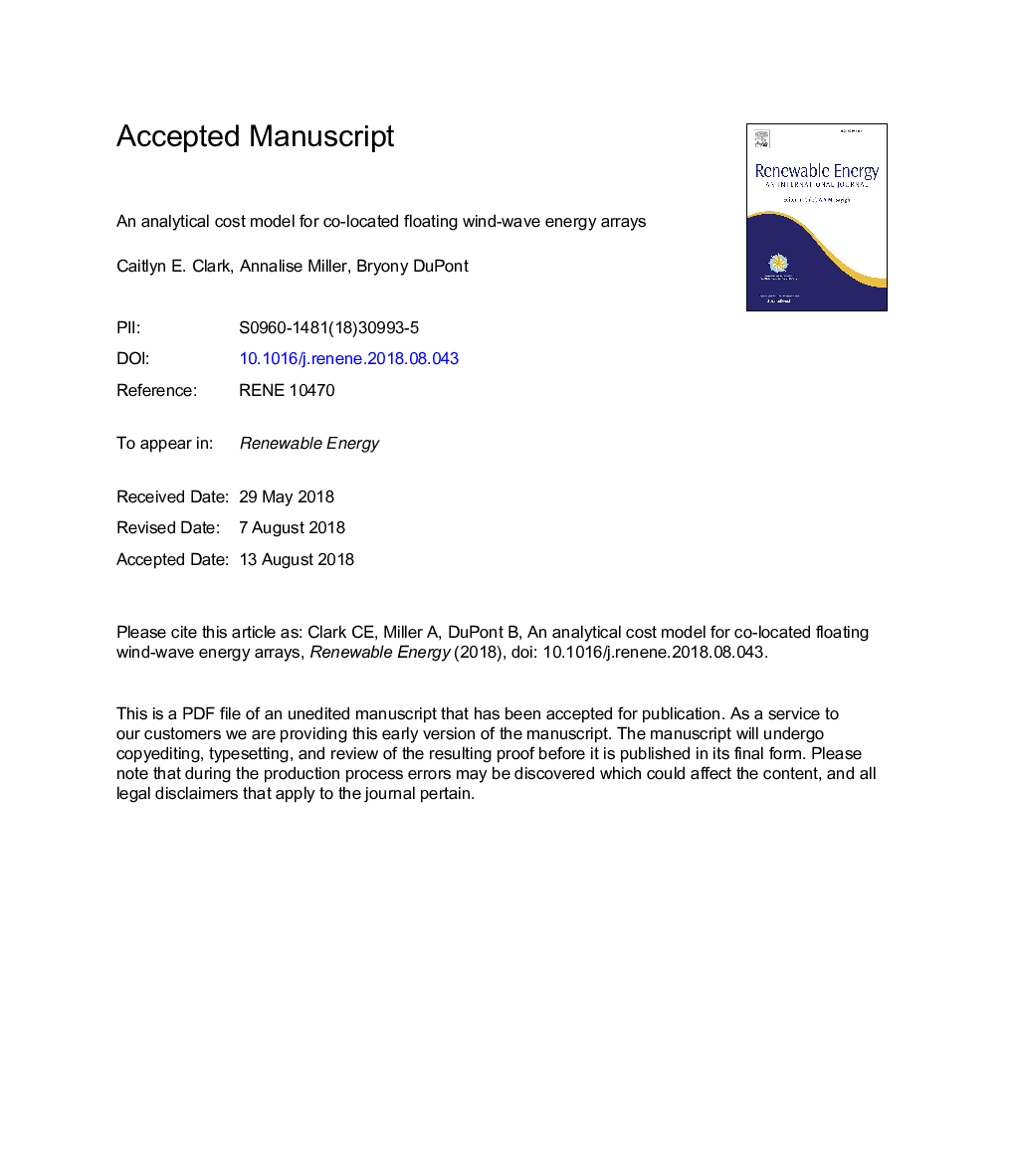| Article ID | Journal | Published Year | Pages | File Type |
|---|---|---|---|---|
| 11001192 | Renewable Energy | 2019 | 27 Pages |
Abstract
Offshore wind and wave energy are co-located resources, and both industries are driven to reduce cost of energy. Due to the maturity of offshore wind technology and continued growth of both offshore floating wind and wave energy converter (WEC) technology, there is new opportunity to combine wind and wave technologies in the same leased ocean space through co-located array development. Co-location is projected to have synergistic effects that reduce direct and indirect costs for developments, but few of these synergistic effects have been quantified, and many have not been related to cost. Moreover, there is currently no cost model that incorporates these effects. In this study, we address this need by developing a cost model that represents co-located array developments, particularly for floating offshore wind and WEC technologies. We exemplify the use of this cost model through a case study. Results suggest floating wind-wave co-located arrays are advantageous to WEC-only or floating wind-only. These results are contingent on our assumptions regarding cost categories and values included in the model and also the power production and reliability of the devices. We conclude by identifying research gaps and uncertainties to be minimized in future improvements of the model.
Related Topics
Physical Sciences and Engineering
Energy
Renewable Energy, Sustainability and the Environment
Authors
Caitlyn E. Clark, Annalise Miller, Bryony DuPont,
